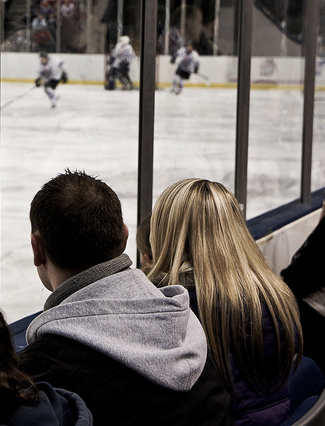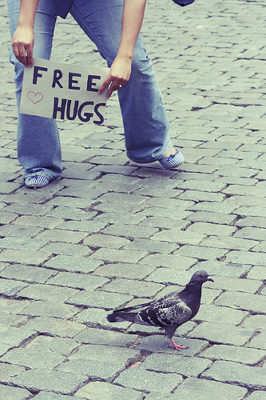Today is Hazel’s birthday. It is December 12th, the day Mexicans show their devotion to the Virgin Mary, known to them as La Virgen de Guadalupe. Pilgrimages, parades, and dazzling fireworks are broadcast live throughout the country. Up until this moment, I was too chicken to say that I pray to Guadalupe because it sounds like I am saying I pray to guacamole. I also thought my intellectual friends would smile politely, but never speak to me again. But I am not afraid anymore. I believe that the Virgin Mary might be the most powerful woman in the world.
Ever since Hazel could talk, we have had a special tradition of waking up before dawn on her birthday and participating in a celebration of Guadalupe, no matter where we are. This morning I woke Hazel up at four thirty. She crawled out of bed and put her down jacket and snow boots on over her footie pajamas. We walked hand in hand through the dark to the Catholic church a few blocks away. When she was younger, I wrapped her in a sleeping bag and carried her. One year, I pulled her in a sled through the heavy snow. Every December 12th, the church’s large hispanic congregation dances and sings in honor of Guadalupe from five in the morning until seven, when the sun comes up. You wouldn’t believe me if I told you how many people turn out for this celebration in Boulder, Colorado. Hazel and I tried to count when we were in the church. Five hundred people? Four hundred at least.
The legend goes that Guadalupe appeared to Juan Diego in rural Mexico in 1531, at sunrise. When the bishop didn’t believe the story that this powerful woman would appear to a poor native, Diego unfolded his cloak. Rose petals scattered on the floor, and where they had been folded inside his shirt was now a clear image of el Virgen, below a moon, surrounded by light. Ever since then, Mexicans believe they are under the Virgin Mary’s special protection.
Hazel and I walked in silence, watching the snow sparkle under the streetlights. Everything else was dark. I led the way past the middle school and to the top of the hill. Then as soon as we crested the hill, we heard the drumbeat, a steady boom boom boom cutting through the icy darkness. Hazel took the lead and ran toward the dancers and music.
As we approached, it felt like we had gone through the back of a wardrobe and into a different world; one full of bright colors, lights, and the music of drums and accordions. Parking attendants did their best to keep the river of cars flowing smoothly. A young woman greeted us at the door of the church. “Buenos Dias,” she said and handed us a thick bulletin with the lyrics of at least twenty-one songs that would be sung that morning. She carried an infant in one arm and several bouquets of red roses in the other. Grown men paraded in through the doors and knelt to pray, wearing white jackets with sequined images of Guadalupe on the back. As soon as we sat down, children and teenagers in beaded costumes danced down the center aisle, shaking the leg rattles attached to their ankles.
When I was very pregnant with Hazel, I went into a used furniture store looking for a bed and came home with a painting. It was a very large portrait of Guadalupe wearing a blue cape covered in stars and surrounded by golden light. I had to buy it. I don’t know why. I didn’t even know who she was or what she stood for in those days. But I was drawn to her calm beauty.
At home, I hung the painting over the hallway in our apartment. As I did laundry or tried to reason with our toddler, I talked to Guadalupe. “Can you give me a hand through bedtime? Or I may start drinking heavily and that would be bad for the baby.” At the time, Kurt was living in another state tracking wildlife, while I was the assistant director at a small residential school in Vermont. I was alone, responsible for our two year old boy and the twelve teenage boys who lived directly above me, in one of the five dormitories on campus. Guadalupe’s mature, female energy was welcome.
As my due date came and went, I talked to Guadalupe nightly. It was as if she was on the other end of a phone line. I’d call her to say, “I’m scared. What if this baby isn’t healthy? I don’t know if I can handle that.” She just listened quietly. It felt good to talk to an adult, even if she was a painting. She was a funny kind of confidante, but one I came to rely on. It helped that she couldn’t gossip. At a time when I was feeling alone and unsure, she represented deep love and faith in the unknown.
My water broke during a dorm meeting. I stood up to say goodnight to the boys and water poured out of me onto the floor where they usually wrestled and play-boxed. The boys panicked. Teenage boys panicking doesn’t look like much. There is a rare moment of silence, then everyone runs away. One boy was sweet enough to walk me down the stairs. But he kept muttering, “I don’t know how to deliver a baby. I don’t know how to deliver a baby.” Kurt drove home through a snowstorm and we made it to the hospital in time.
Hazel was born early in the morning on December 12th. She came out screaming. I remember watching the sun rise pink through the window and singing to this tiny baby to soothe her. Then my dear friend Teza called from Collingwood, Ontario to say she had just given birth to a baby girl. Together we figured out that it was also Guadalupe’s “birthday.” What are the odds of best friends having their daughters on the same day, and not just any day, but the one devoted to unconditional love and healing? We often talk to Hazel and Rozlyn (our “z girls”) about the gift of being born under the protective fire of the most powerful kind of maternal love.
For twelve years, Hazel and I have been waking up before dawn on her birthday to honor Guadalupe in one way or another, usually with five hundred hispanic strangers. But I only recently discovered that Guadalupe, or the Virgin Mary, is revered by more people than Catholics. Muslim men and women are also devoted to her. She is the only woman mentioned by name in the Koran and her name appears more in the Koran than in the new testament. It’s not unusual to see young Muslim women in headscarves visiting the Virgin Mary at a Christian shrine. When asked, the women speak of her resiliency, her ability to prevail through hardships, and her example of love. That’s why I think the Virgin Mary might be the most powerful woman in the world and a force for unity and peace.
This is not the story of how I prayed to Guadalupe before my surgeries and promised that I would go to church every week if I came out alive. No, this is the story of how I am living each day as though I may die tomorrow and therefore I am no longer afraid to say I believe in Guadalupe. What I’ve learned throughout these challenging months is that it is silly to hold back love. I still don’t know where I belong; I have shopped for the right church/temple/mosque for years. But I do know that I can kneel before a divine presence like the Virgin Mary who stands for love. She is for all people, no matter their background or religion. Her compassionate gaze doesn’t suggest that one way is the only way, but instead finds room for all of our beautiful brokenness.
I reminded Hazel about Guadalupe’s unconditional love and protection right before I went in for surgery, when I was not sure I was going to come out alive. I wrote,
“Dear Hazel,
Every night, you sing yourself to sleep because you are afraid. Sometimes, you find your way through the dark into our room and ask to crawl in bed with us. Within minutes, I hear your breath deepen as you fall asleep. You say you feel safe next to me. But you are always safe, even if I am not around. Not everyone is born under such a fierce, protective gaze, but you were. When you feel scared, remember that you are not alone. Picture the rays of light reaching out from Guadalupe and surrounding you with protection. Dark, lonely thoughts may seem so close that they could touch your lips and take you over, but they won’t. They are bouncing off that shield of light. I am sending you that light and love. Guadalupe is also sending you her light and love. And you know what? To me, you seem to shine with a golden protective light whose energy says: all will be well. I believe that too; all will be well.
Love, Mama.”
This morning, Hazel and I stayed in the church for the dancing, the offering of candlelight and armful after armful of flowers, and then walked back home. It was barely six am. The streets were still dark. Kurt and Cole were tucked in, asleep. All is well.
Love,
Susie














 I can’t help but make a connection between the
I can’t help but make a connection between the 



